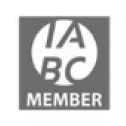Do you know the 5 fundamentals of corporate storytelling?
Corporate stories are no different than any other story.
They simply have a business purpose and a business context.
When it comes to corporate storytelling, it’s important to know and apply the basics — whether you’re writing B2B articles, interviews, content, collateral, websites or white papers.
Here are five corporate storytelling fundamentals you should know.
- Who are the characters in your corporate story? Who is this story about? To create real characters, you have to talk to real people (don’t make it up).
- Think about the setting of your story. Where will the action happen? What does this place look like? Include relevant details related to place.
- What’s the plot? In other words, what happens in the beginning, middle and end of the story? Map out a logical structure.
- Every memorable story must have a conflict. What’s the problem or trouble that must be solved before the story ends? Can you state this problem or trouble in one sentence?
- For readers to feel satisfied with a story, there must be a resolution to the conflict. How, precisely, will the problem or trouble be resolved? Can you state the solution to this problem or trouble in one sentence?
Let’s consider a corporate storytelling piece about best practices for planning a major company move.
Here’s how the fundamentals fleshed out:
- Characters: Chris, the highly focused, detail-oriented company president; Bill, his personal/business mentor; and Jeff, the experienced corporate moving expert/adviser
- Setting: Chris’ company, a plumbing supply house with an office and a large warehouse full of plumbing products
- Plot: Chris’ company was being forced to move; he had to find a new location and then plan to pack up, move and accurately relocate all the company’s plumbing products, computer technology, equipment and furnishings; speed was important so the company could start filling customers’ orders again
- Conflict: Chris worried that his company would not be ready to serve customers so soon after moving day and that he’d lose business after the move
- Resolution: Chris took time to create a detailed 12-month plan, work with others and then execute the plan, which enabled his company to move on a Friday and start serving customers again on Monday morning
Check yourself: Do your corporate stories include all five of these fundamentals?


















